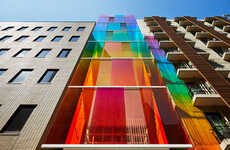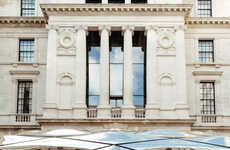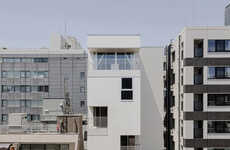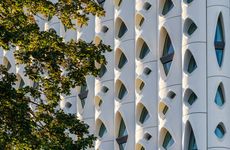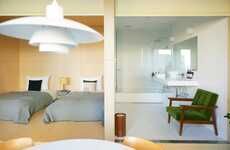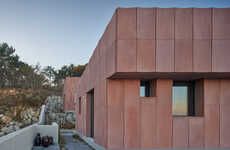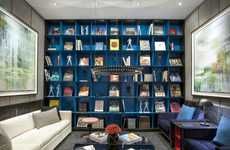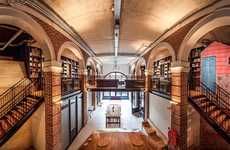
The Hotel KHAN in Seoul Changes Color Based on the Sun's Angle
Christopher Magsambol — October 17, 2015 — Art & Design
References: agoda & retaildesignblog.net
The Hotel KHAN was erected on a busy street corner in Seoul, South Korea. The hotel sits on a unique piece of land, overlooking an intersection of busy highways, and steps away from the financial district as well as a heavily populated residential area. To gain greater access to all these resources, The Hotel KHAN was built in the shape of a parallelogram.
Apart from being the tallest building in the area, the Hotel KHAN brings more attention to itself with its color-altering facade. The color of the exterior changes depending on how much sunlight is reflected, allowing for the entire mood of the building and surrounding area to be fluctuate. The interior of the hotel is also quite impressive and takes inspiration from surrounding condominiums with hotel rooms that are large, spacious loft-like units.
Apart from being the tallest building in the area, the Hotel KHAN brings more attention to itself with its color-altering facade. The color of the exterior changes depending on how much sunlight is reflected, allowing for the entire mood of the building and surrounding area to be fluctuate. The interior of the hotel is also quite impressive and takes inspiration from surrounding condominiums with hotel rooms that are large, spacious loft-like units.
Trend Themes
1. Color-changing Architecture - The use of responsive materials and color-changing technology in architecture provides opportunities for more engaging and visually dynamic structures.
2. Dynamic Facade Design - Incorporating technology and responsive materials into exterior building design opens up new possibilities for urban aesthetics and building functionality.
3. Sunlight-based Design - Designing buildings with sun angles and reflective surfaces in mind has potential to increase energy efficiency and create more sustainable urban environments.
Industry Implications
1. Architecture - Incorporating responsive materials and color-changing technology into architectural design presents an opportunity for architects to push the boundaries of traditional building design.
2. Construction - The use of responsive materials and technology creates opportunities for the construction industry to innovate in building design and improve building efficiency.
3. City Planning - Sunlight-based design and dynamic facade design can have an impact on the overall aesthetic and functionality of urban environments, providing opportunities for city planners to incorporate these elements in future development plans.
1.8
Score
Popularity
Activity
Freshness


